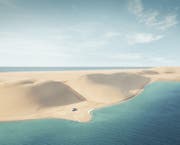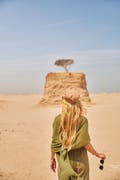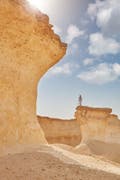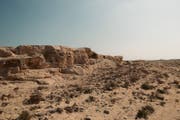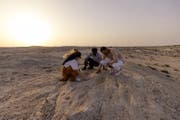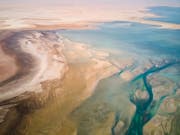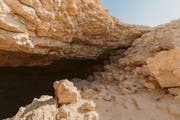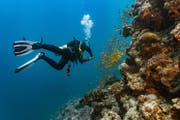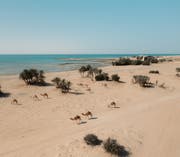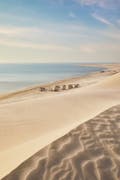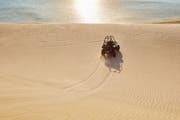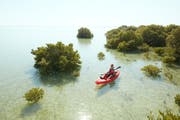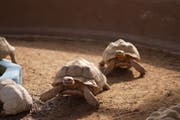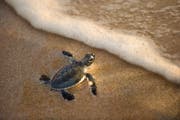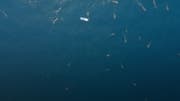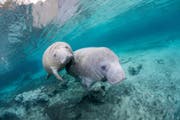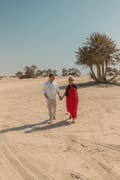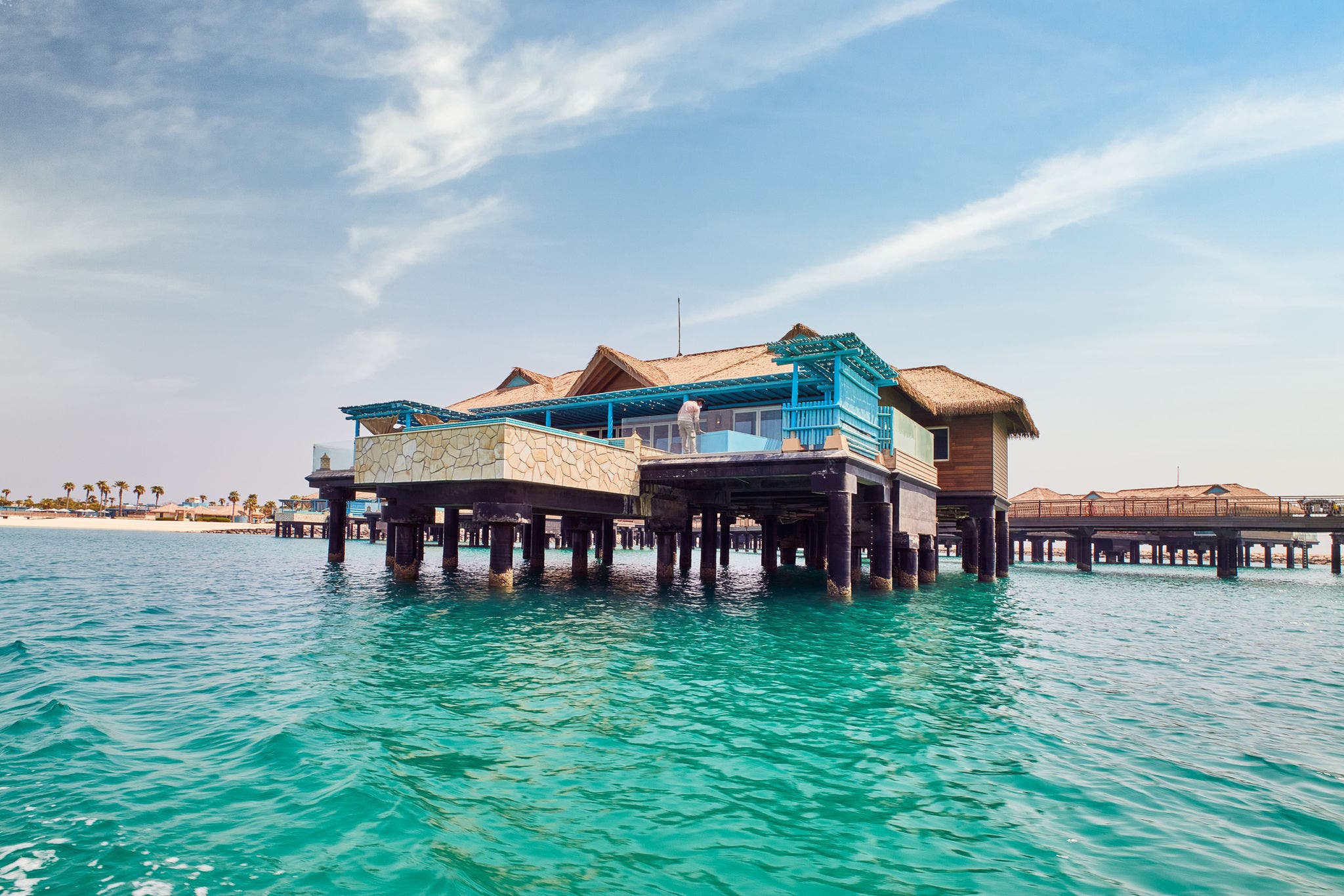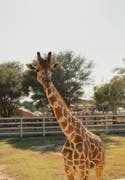Our unique peninsula is one of stark contrasts and fascinating natural wonders, where an arid desert and beautiful coastline are home to over 300 species of wild plants and rare wildlife.
-
Two diverse deserts
Sandy dunes at Khor Al Adaid (the Inland Sea) and a rocky desert or hamada.
-
Desert climate
Year-round sunshine, with warm summers and dry, pleasant winter temperatures.
-
Desert flora
300+ species of wild plants, including wildflowers, grasses, trees and shrubs.
Take a closer look at Qatar’s desert landscapes
Be amazed at the diversity of our vast sandy plains.
Jebels
Fossilised limestone sand dunes called jebels are famous in Qatar for the nearly 900 carvings (petroglyphs) found at sites like Al Jassasiya. Dating back to Neolithic times, you’ll discover etchings of ancient board games, pearl holders, ostriches and dhow boats.
Wadi and runnel
While there are no permanent rivers in Qatar, you might spot slivers of green in the dry river valleys called wadis. Flash flooded during the rainy season, these short runs (runnels) attract a diverse animal community of birds, geckos, spiny-tailed agamas, hedgehogs, snakes and more.
Rawdah and sinkholes
Rawdah (Arabic for fertile or meadow), sinkholes and caves prove that once a wetter Arabia existed. As groundwater dissolved carbonate rock, sinkholes and caves like the spectacular Dahl Al Misfir were formed. As these underground pockets fill during winter rains, life follows the water and lush green oases beckon hopping desert rodents, birds, foxes and bats.
Sand dunes
Qatar is famous for its striking crescent-shaped sand dunes in the desert, giving off a magical vibrating sound when you move the sand, similar to singing or humming. Sand dunes might look static, but they move as much as 10 metres per year. If you’re a thrill seeker, Qatar’s sand dunes offer endless adventures.
-
Coastline length
563 km of coastline.
-
Water temperature
Average sea temperature of 33.9° C
-
Water colour and clarity
Clear aquamarine waters with high salinity.
Unique features of Qatar’s mesmerising coastline
Home of dugongs, flamingos and more, dive into this special coastal ecosystem.
Sabkha
The eerie beauty of Qatar’s salt flats or sabhkas is the result of salt water coming into contact with low-lying land, giving these plains their signature salt encrusted appearance. On the way to Khor Al Adaid (the Inland Sea), you will spot many sabkhas and, if you’re lucky, the nocturnal Gulf sand gecko.
Mangroves
You’ll be amazed at the lush green oases found at Purple Island and Al Thakhira Beach. These mangrove forests are true ecological wonders, acting as a carbon sink and playing home to birdlife, fish and gastropods. Grey and white mangrove trees thrive in briny water, extreme temperatures, changing tides and high-water levels. A favourite resting place during the flamingo migration, you’ll love exploring the mangroves on a peaceful kayak ride.
Coral reefs
Did you know that coral reefs are home to 25% of all marine species? Qatar is the richest in coral reefs of all the Gulf countries. The best ones can be found on the north-eastern coast and around Al Aaliya Island – a sanctuary and foraging habitat for an array of aquatic life and endangered species like hawksbill sea turtles.
Seagrass beds
Gulf seagrass beds are among the highest productive ecosystems on the planet, boasting fantastic carbon sequestration capacity like mangroves and salt marshes. Seagrasses are the staple diet of marine reptiles, fish and mammals like the smiley-faced dugongs.
Beaches
Our popular beaches and warm turquoise waters are not just for swimming and water sports but are also wonderful places to discover birds and sea life, see interesting rock formations and walk along miles of sand. Explore the sandy shores of the unspoilt Zekreet Beach, the serene paradise of Simaisma Beach or reef of Dukhan Beach – there are plenty of wild beaches where you can enjoy a picnic or even spend the night.
More natural places to visit in Qatar
Tiny islands, tranquil nature reserves and parks full of natural vegetation give you plenty more opportunities to feel at one with nature.
The island ecosystem
Qatar has 10 islands near the coast, both inhabited and uninhabited. From the vibey Banana Island and Pearl Island to the snorkelling paradise of Aaliya Island and the picturesque Al Safliya Island, you’ll enjoy views of the Doha skyline and imagine a time when pirate dhows cruised around the peninsula.
Nature reserves
Qatar has established several nature reserves and conservation areas to protect ecological systems. These include Al Reem, a UNESCO Biosphere Reserve and home of the Arabian oryx, the remarkable Khor Al Adaid (Inland Sea) and Al Thakhira Reserve with Qatar’s oldest mangrove forests.
Public parks
You don’t have to travel far to be surrounded by natural vegetation and sprawling gardens. Our parks are popular hangouts for picnics, workouts or meeting up with friends as you escape to nature for a few hours.
Things to know before travelling
-
Visas
Want to travel visa-free? Check if you qualify here.
-
Getting here
Planning your trip to Qatar? Check how to get here.
-
Travel tips
Make the most of your visit with our handy travel guide.
-
Getting around
From a dhow boat to our world-class metro, here’s how to easily explore Qatar.
Doha City Guidebook
Contact



